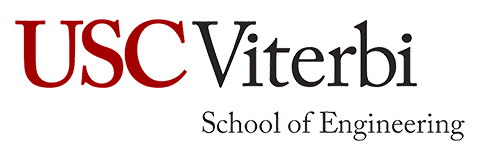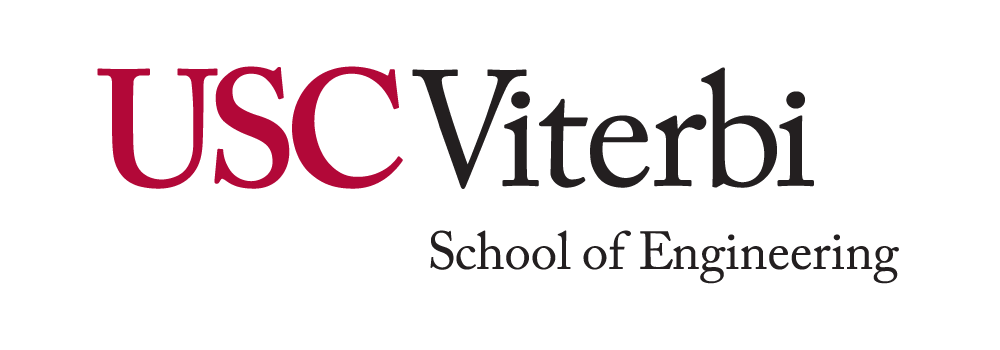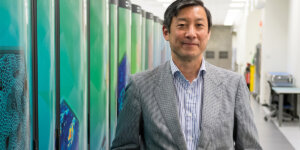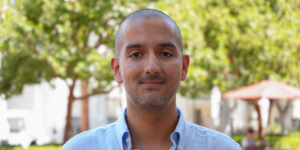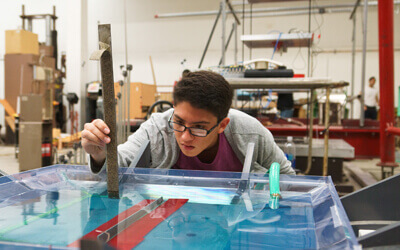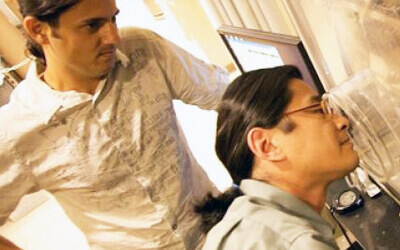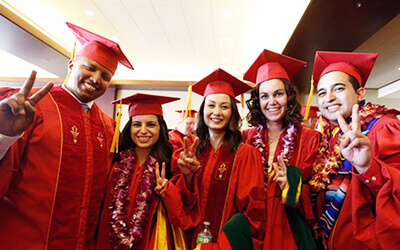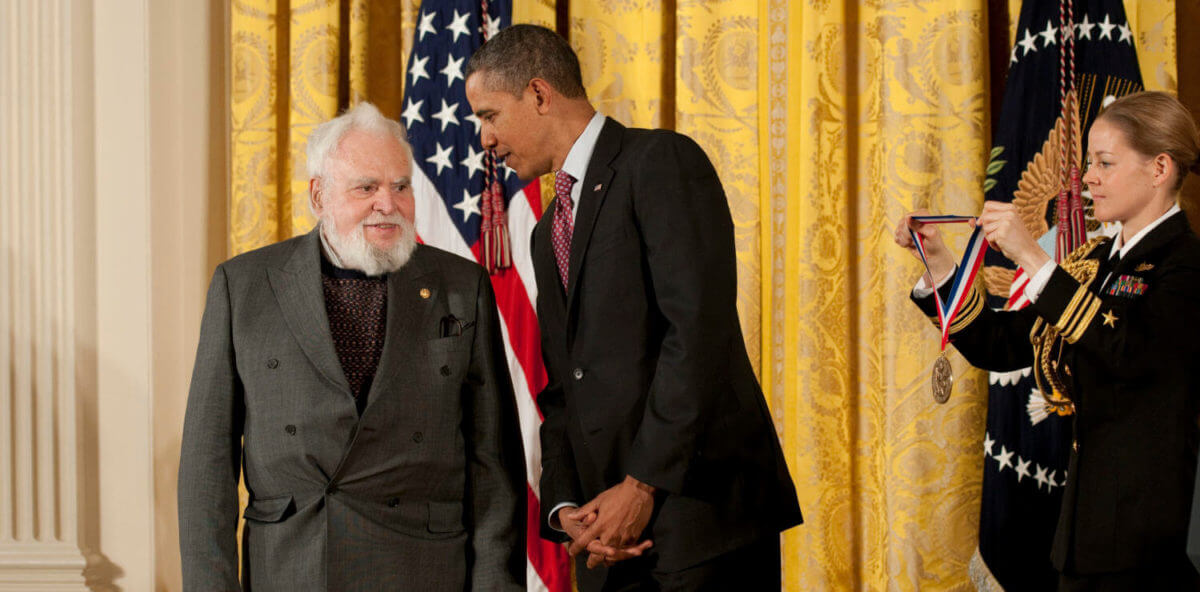
Former President Barack Obama presents Solomon Golomb with the National Medal of Science at an awards ceremony held at the White House. (Photo/Ryan K. Morris, National Science & Technology Medals Foundation)
On January 31st, the Ming Hsieh Department of Electrical Engineering, along with the Viterbi School, USC’s Office of the President, and USC Hillel, hosted the “Life & Legacy of Sol Golomb.” The day-long event celebrated Professor Golomb’s great contributions to the department, the USC and Los Angeles Jewish communities, and the fields of engineering and mathematics.
“Solomon Golomb was much more than simply a member of USC’s faculty,” said USC President C.L. Max Nikias. “He was one of the most incredible intellects in the history of the American academy. And he was also one of the most treasured members of the Trojan Family.”
The day started off with a symposium, in which Golomb’s friends and colleagues from around the world came to USC to share knowledge and stories. Attendees then gathered in the Hughes Aircraft Electrical Engineering Center lobby, where Dean Yannis Yortsos spoke and a bronze relief of Golomb was unveiled. The new relief hangs opposite one of Ming Hsieh, the department’s namesake, unveiled last year.
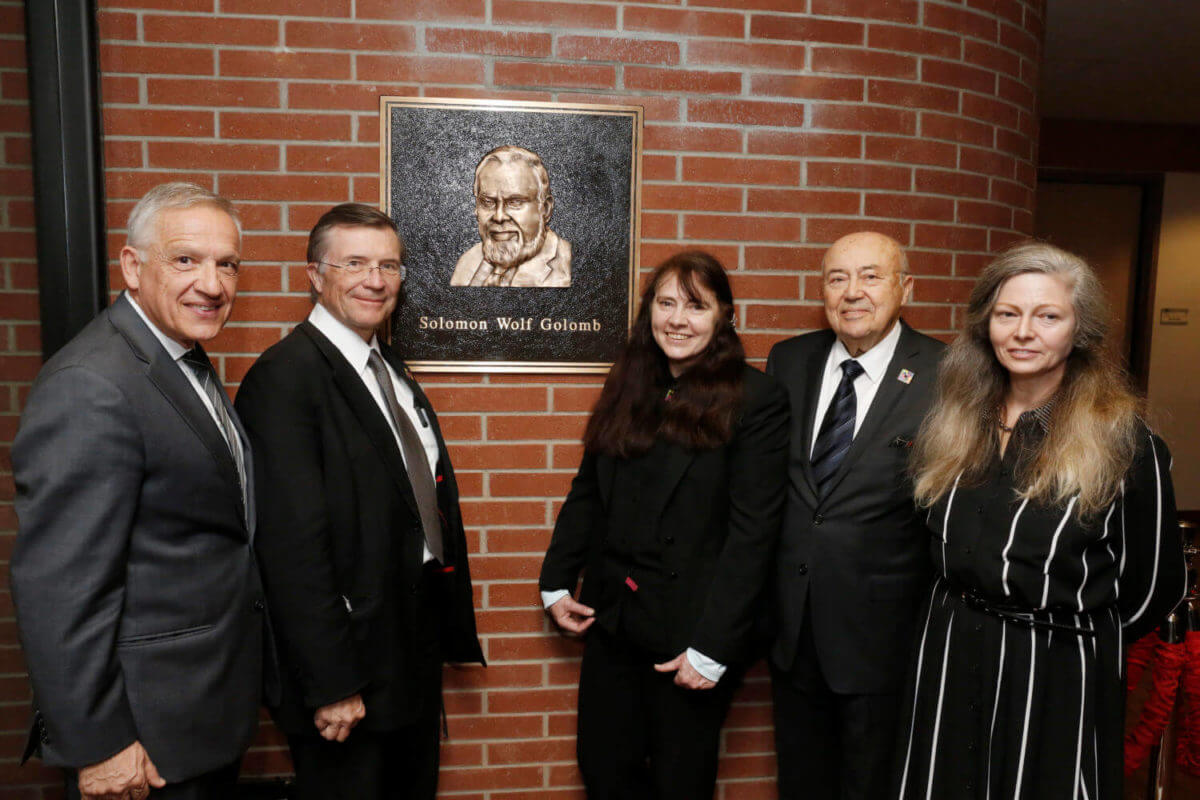
Dean Yortsos (left), Andrew Viterbi (second from right), and Golomb’s family at his relief unveiling. Photo by: Steve Cohn © 2017
“Brilliance can be intimidating, but Sol’s was uplifting; it was awe-inspiring. It flowed from his remarkable mind naturally, fluidly, effortlessly. His was the kindest, most magical brilliance,” said Dean Yortsos.
Golomb was indeed brilliant. The son and grandson of rabbis, he received his doctorate in mathematics from Harvard in 1957 while simultaneously working at JPL on Explorer 1 – the United States’ first satellite, launched three months after Sputnik. He continued at JPL after receiving his doctorate, and was put in charge of the institution’s new Information Processing Group.
In 1963, Golomb joined the faculty at USC. He was heavily recruited by UCLA and Caltech, two schools that at the time had much stronger reputations than USC. However, Golomb chose USC because he saw potential to build something new. While USC had not risen to international, or even national prominence, he understood that it was here that he could make the biggest impact. He ended up staying for over half a century.
“I believed that at USC I had a chance to make a difference and to help it achieve its potential. And I stayed because there has been steady progress on this path — in fact, more than I could have imagined 50 years ago,” said Golomb in a recent interview.
As President Nikias said, “I noticed that the arc of his career followed a parallel path to the rising reputation of our university.”
Although he was immersed in the fields of mathematics and engineering, Golomb remained true to his Jewish roots. A devoted supporter of USC’s Hillel, he regularly read Torah on High Holidays. The Jewish community at USC, like the scientific one, was one that he worked hard to foster and in which he made lifelong friendships.
“Over the course of the now 40 years that Sol had read Torah, he did so for what I imagine to be close to 10,000 Jewish students, faculty and community members,” said Bailey London, Executive Director of USC Hillel.
Of all the friends and family that attended Golomb’s memorial, none knew him better, or longer, than his close friend, Andrew Viterbi, for whom USC’s engineering school is named. “My friendship with Sol lasted nearly six decades, during which time he grew from the brightest kid in the room to the wisest man on campus,” said Viterbi.
Viterbi met Golomb on his very first day at JPL, in 1957. Together they worked on NASA’s earliest satellite programs, raised families in Los Angeles, and left indelible marks on USC and the field of engineering.
“The most memorable event in my career at JPL with Sol was in 1958,” said Viterbi, “when we stood by a primitive data terminal breathlessly awaiting the appearance of the tiny satellite Explorer I. Armed with a large sheaf of graphs of pre-computed range and velocity values, we validated its success and determined the parameters of the orbital ephemeris of our new nearest astronomical neighbor.”
At Golomb’s memorial, London, the USC Hillel director, evoked one of Judaism’s most important tenets, l’dor vador: the act of passing on values from one generation to the next. No one would be prouder than Golomb to see how many have been touched by his life and are passing on his knowledge to this day.
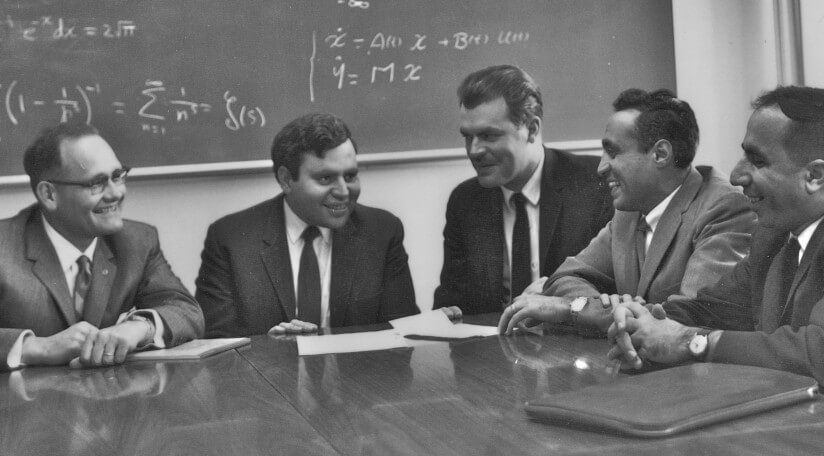
Sol Golomb, second from left, at USC in 1963 with Dean Ingersoll, Irving Reed, Nasser Nahi, and former dean Kaprielian. (Photo/Courtesy of George Bekey)
Published on February 16th, 2017
Last updated on May 16th, 2024
